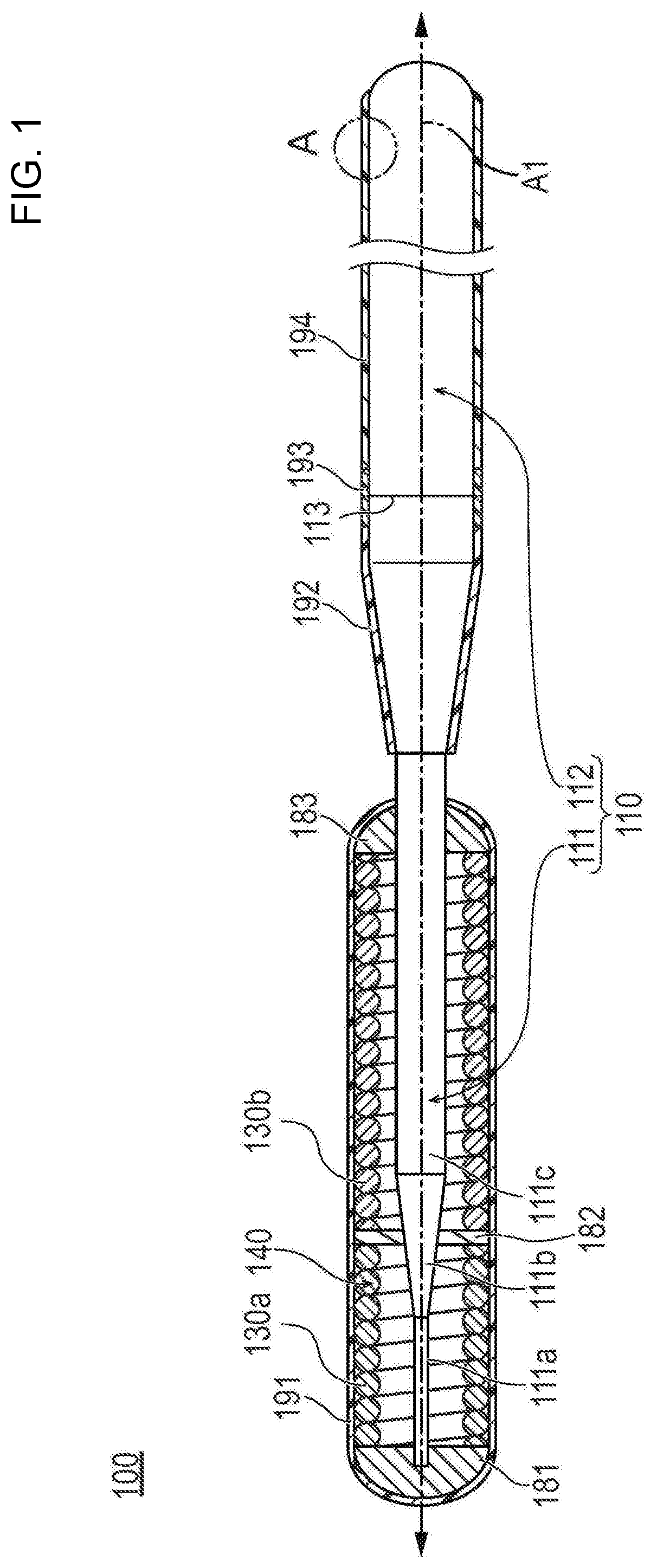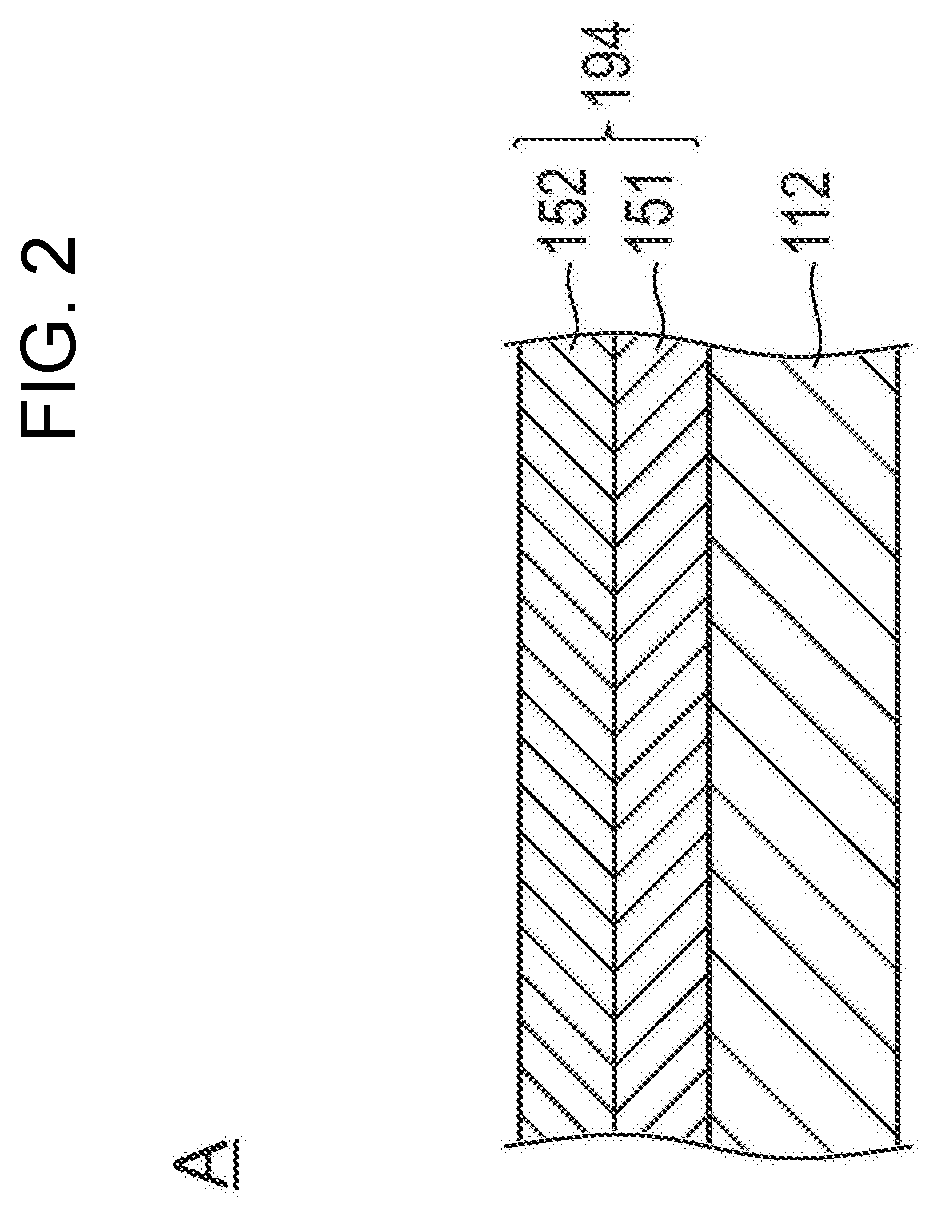Medical device
a medical device and proximal portion technology, applied in the field of medical devices, can solve the problems of burdensome doctor's difficulty in immediately visual recognition of medical devices in the operation room, and difficulty in immediately visual recognition of medical devices by doctors, so as to improve the visibility and identifiability of medical devices, improve the color-exhibition property of resin layers, and improve the effect of visibility
- Summary
- Abstract
- Description
- Claims
- Application Information
AI Technical Summary
Benefits of technology
Problems solved by technology
Method used
Image
Examples
example 1
[0109][Preparation of Coating Solution for Forming the First Layer]
[0110]32.0 g of a quinacridone-based organic pigment (C.I. Pigment Violet 19, average particle diameter of 430 nm) (relative to the solid content: 36.8% by weight), 8.0 g of titanium oxide (C.I. Pigment White 6, rutile type, average particle diameter of 250 nm) (relative to the organic pigment: 25% by weight, relative to the solid content: 9.2% by weight), 132.0 g of methyl isobutyl ketone as a solvent, 5.4 g of polytetrafluoroethylene (PTFE, average particle diameter of 0.20 μm, melting point of 327° C.), 16.1 g of tetrafluoroethylene-hexafluoropropylene copolymer (FEP, average particle diameter of 0.20 μm, melting point of 270° C.), 21.5 g of polyphenylene sulfide resin as a binder resin, 3.2 g of DISPERBYK 2055 (manufactured by BYK-Chemie) as a dispersant (relative to the organic pigment and the titanium oxide: 8% by weight, relative to the solid content: 3.7% by weight), and 0.8 g of GARAMITE 7305 as a thickening...
example 2
[0116]A guide wire was obtained in the same manner as Example 1 except that, for preparing a coating solution for forming the first layer, the blending amount of the quinacridone-based organic pigment is changed to 20.0 g (relative to the solid content: 23.0% by weight) and the blending amount of the titanium oxide is changed to 20.0 g (relative to the organic pigment: 100% by weight, relative to the solid content: 23.0% by weight).
example 3
[0117]A guide wire was obtained in the same manner as Example 1 except that, for preparing a coating solution for forming the first layer, the blending amount of the quinacridone-based organic pigment is changed to 16.0 g (relative to the solid content: 18.4% by weight) and the blending amount of the titanium oxide is changed to 24.0 g (relative to the organic pigment: 150% by weight, relative to the solid content: 27.6% by weight).
PUM
| Property | Measurement | Unit |
|---|---|---|
| distance | aaaaa | aaaaa |
| thickness | aaaaa | aaaaa |
| thickness | aaaaa | aaaaa |
Abstract
Description
Claims
Application Information
 Login to view more
Login to view more - R&D Engineer
- R&D Manager
- IP Professional
- Industry Leading Data Capabilities
- Powerful AI technology
- Patent DNA Extraction
Browse by: Latest US Patents, China's latest patents, Technical Efficacy Thesaurus, Application Domain, Technology Topic.
© 2024 PatSnap. All rights reserved.Legal|Privacy policy|Modern Slavery Act Transparency Statement|Sitemap


